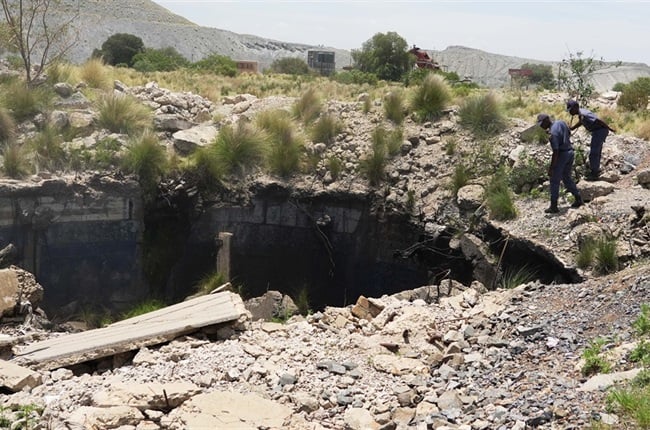Illegal miners, known as zama zamas, operating underground in Stilfontein have resorted to sending out desperate letters pleading for help as more lives are lost below the surface. On Thursday, 5 December, operations in the area were suspended after a rope used to deliver food to the miners was torn. By the end of the previous day, the death toll had continued to rise, with seven bodies recovered. One of these bodies, retrieved on Wednesday, was found holding a letter from the trapped miners, further illustrating the grim reality faced by those working in these perilous conditions.
The letter, written in Sesotho, conveyed a heart-wrenching message: “Greetings parents, we would like to inform you that there are a lot of sick people underground. They can die at any time. We are asking that you come and collect them.” This plea for help has highlighted the dangerous and deteriorating health conditions underground, where miners are at constant risk of death due to a lack of medical care, unsafe working conditions, and the presence of hazardous elements in abandoned mine shafts.
As of Thursday, another letter was received indicating that yet another illegal miner had died underground. National Police Commissioner General Fannie Masemola confirmed the grim reality, revealing that in the last 24 hours, seven bodies had been recovered from Stilfontein. “We are awaiting the post-mortem reports to confirm the cause of death of these illegal miners,” Masemola said, further confirming that at least 26 illegal miners had been rescued from various shafts over the past two days. These tragic events continue to draw attention to the dangers faced by those involved in illegal mining activities.
To date, over 1,387 illegal miners have been brought to the surface in recent weeks. Among those arrested, the majority are foreign nationals, including 919 Mozambicans, 382 Zimbabweans, and 65 Lesotho nationals, along with 13 South Africans. This highlights the transnational nature of the illegal mining crisis and the extent to which individuals from across the region are willing to risk their lives in search of gold. The authorities have made it clear that these dangerous activities cannot continue, emphasizing the need for a concerted effort to combat illegal mining operations.
General Masemola stressed that, despite the efforts to control the situation, it remains unsafe for anyone to work in the disused mine shafts. He reiterated that the matter is currently before the courts and that a court order mandates that food be supplied to the miners still trapped underground. However, he called for broader support to address the complex issue of illegal mining. “To win this war, we need everyone to come on board to support the work of the police,” he said. “Alone, we cannot do it, but collectively, we will win this fight.”
The situation in Stilfontein serves as a stark reminder of the dangers faced by zama zamas and the broader implications of illegal mining in South Africa. The combination of poor working conditions, lack of regulation, and the desperation of individuals seeking a livelihood in one of the country’s most dangerous industries creates a volatile and tragic situation. While authorities continue their operations, the message is clear: a unified and coordinated approach is needed to address this issue and prevent further loss of life.
